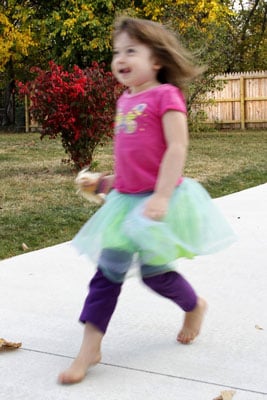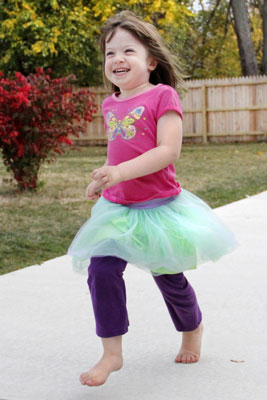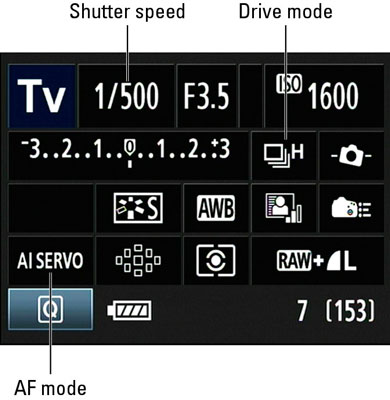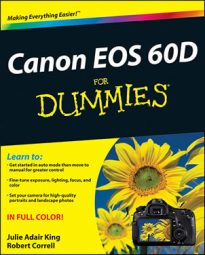Using a fast shutter speed is the key to capturing a blur-free shot of any moving subject, whether it’s a spinning Ferris wheel, a butterfly flitting from flower to flower, or a playful young girl. In the first image, a shutter speed of 1/100 second was too slow for the Canon EOS 60D to catch the subject without blur. For this subject, who was moving at a fairly rapid speed, a high shutter speed (all the way up to 1/8000 second) was required to freeze the action cleanly (and, frankly, to show off the maximum shutter speed of the 60D).


Try the techniques in the following steps to photograph a subject in motion:
Set the Mode dial to Tv (shutter-priority autoexposure).
In this mode, you control the shutter speed, and the camera takes care of choosing an aperture setting that will produce a good exposure.
If you aren’t ready to step up to this advanced autoexposure mode, try using Sports mode. Just be aware, though, that you have no control over any other aspects of your picture (such as white balance and flash) in that mode.
Rotate the Main dial to select the shutter speed.
The shutter speed you need depends on how fast your subject is moving, so you have to experiment. Another factor that affects your ability to stop action is the direction of subject motion. A car moving toward you can be stopped with a lower shutter speed than one moving across your field of view. Generally speaking, 1/500 second should be plenty for all but the fastest subjects: speeding hockey players, race cars, or boats, for example. For slower subjects, you can even go as low as 1/250 or 1/125 second.
If the aperture value blinks after you set the shutter speed, the camera can’t select an f-stop that will properly expose the photo at that shutter speed.
Raise the ISO setting or add flash to produce a brighter exposure, if needed.
In dim lighting, you may not be able to create a good exposure at your chosen shutter speed without taking this step. Raising the ISO increases the possibility of noise, but a noisy shot is better than a blurry shot. The current ISO setting appears in the upper-right corner of the Shooting Settings display; press the ISO button or use the Quick Control screen to adjust the setting.
You can’t take the ISO reins in Sports mode; you can control that setting only in an advanced exposure mode.

For rapid-fire shooting, set the Drive mode to High-speed Continuous.
In this mode, you can take more than five pictures per second. The camera continues to record images as long as the shutter button is pressed. You can switch the Drive mode by pressing the Drive button or using the Quick Control screen. The icon representing the current mode appears in the Shooting Settings display.
For fastest shooting, switch to manual focusing.
You then eliminate the time the camera needs to lock focus in Autofocus mode.
Turn off automatic image review to speed up the camera even more.
You do this via the Image Review option in Shooting Menu 1. Turning off this option can help speed up the time your camera needs to recover between shots.
Compose the subject to allow for movement across the frame.
You can always crop the photo later to a tighter composition.
Lock in autofocus (if used) in advance.
Press the shutter button halfway or press and hold the AF-ON button to do so. Now when the action occurs, just press the shutter button the rest (or all) of the way. The image-capture time is faster because the camera has already done the work of establishing focus. Remember that in AI Servo mode, you must keep the subject under the active autofocus point (or points) for the camera to maintain focus.
Using these techniques should give you a better chance of capturing any fast-moving subject, but action-shooting strategies also are helpful for shooting candid portraits of kids and pets. Even if they aren’t running, leaping, or otherwise cavorting when you pick up your camera, snapping a shot before they move or change positions is often tough. So, if an interaction or scene catches your eye, set your camera into action mode and then just fire off a series of shots as fast as you can.

